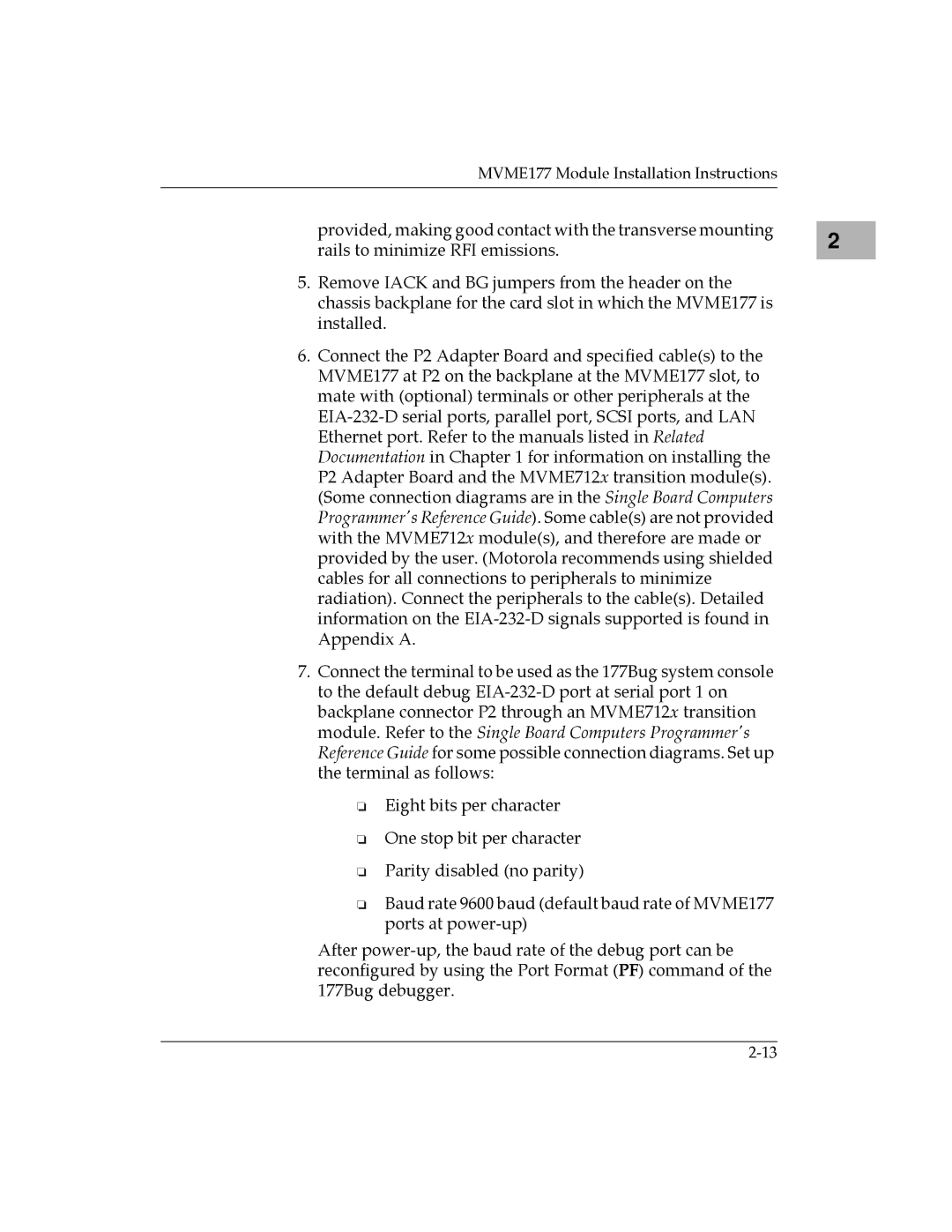
MVME177 Module Installation Instructions
provided, making good contact with the transverse mounting rails to minimize RFI emissions.
5.Remove IACK and BG jumpers from the header on the chassis backplane for the card slot in which the MVME177 is installed.
6.Connect the P2 Adapter Board and specified cable(s) to the MVME177 at P2 on the backplane at the MVME177 slot, to mate with (optional) terminals or other peripherals at the
7.Connect the terminal to be used as the 177Bug system console to the default debug
❏Eight bits per character
❏One stop bit per character
❏Parity disabled (no parity)
❏Baud rate 9600 baud (default baud rate of MVME177 ports at
After
2
